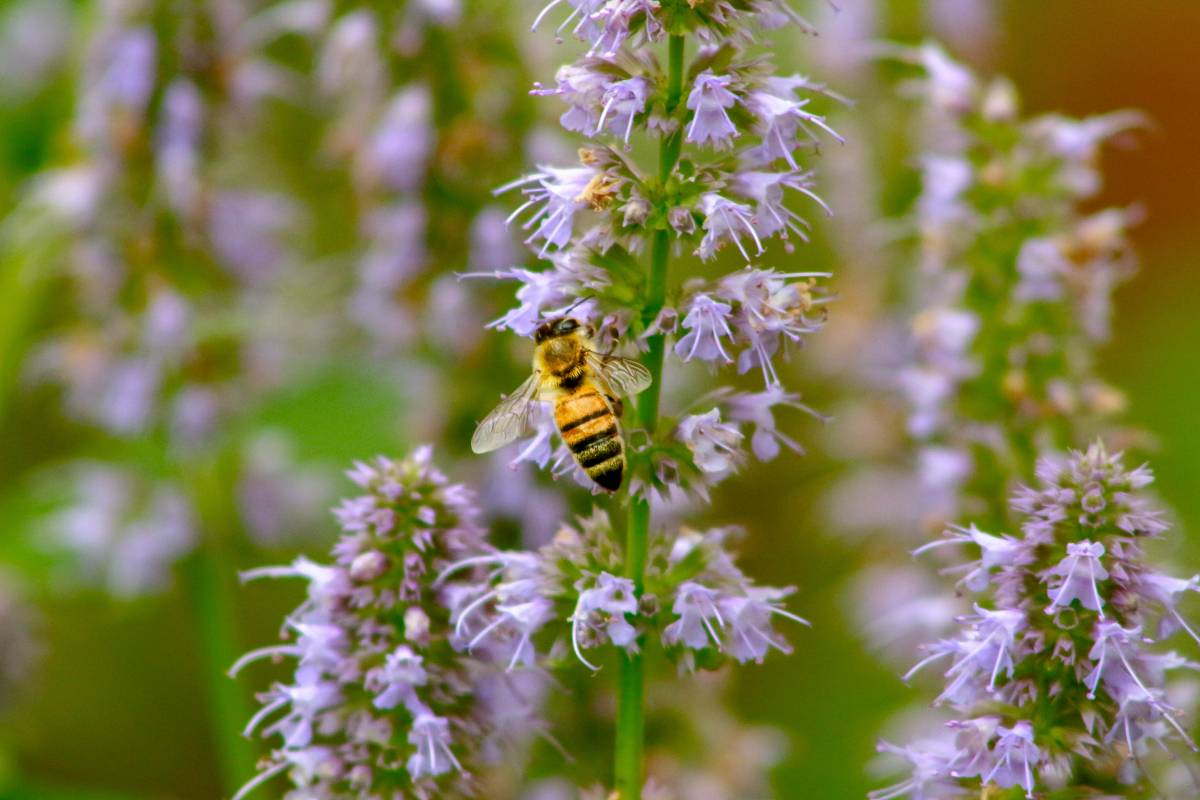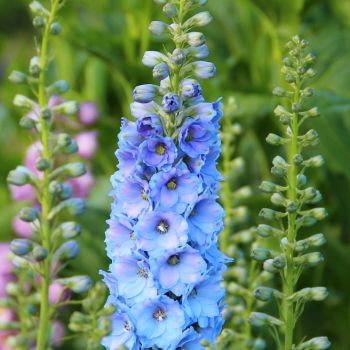Are you ready to add some colour and beauty to your vegetable garden? Some gardeners are reluctant to give up valuable growing space for ‘unproductive’ plants, but growing flowers among your veggies has multiple benefits for gardens and gardeners alike!
From attracting pollinators to providing edible blooms, adding just a few vibrant flowers can enhance both the beauty and productivity of your garden. Read on to learn more about why flowers and vegetables make such good companions.
Pollination and Pest Control
Many flowers attract pollinators such as bees, wasps and butterflies. These little helpers play a crucial role in pollinating vegetable crops, ensuring a bountiful harvest.
Flowers can also attract beneficial insects like ladybirds, lacewings and hoverflies. These insects act as natural predators, feasting on garden pests including aphids and caterpillars, keeping their populations in check. Additionally, certain flowers have aromatic foliage that releases scents that deter pests, acting as natural pest repellents.
Another fascinating aspect of growing flowers in your vegetable garden is their ability to act as trap crops or ‘decoy’ plants. By luring pests away from your precious veggies, flowers can protect your crops from damage. Nasturtiums are a good example; they can become 'sacrificial' plants that attract aphids, which prefer feeding on nasturtium over many common vegetables. Once an infestation is detected the trap crop can be removed, taking the majority of the pests with it.
Bonus Harvests
Flowers can also serve a dual purpose by providing you with edible petals, leaves and even seeds. Imagine plucking a vibrant calendula blossom to enhance your salads or roasting some crunchy sunflower seeds to sprinkle over yoghurt or cereal.
Of course, the aesthetic appeal of flowers should not be overlooked. They add beauty and charm to your vegetable garden, turning it into a vibrant and inviting space full of diversity and life. Depending on what you choose to grow, an added bonus may be a crop of cut flowers for indoor arrangements, bringing a burst of colour and fragrance into your home.
Where to Plant
Many gardeners interplant flowers amongst their crops. Not only does interplanting bring beneficial insects directly into the garden, it may provide an added benefit of keeping pests away from crops by confusing or distracting them. Another approach is to plant the borders of the patch with flowers or to add ‘pollinator rows’ between rows of vegetables.
For gardeners reluctant to give up growing space, there are still ways to grow flowers in your garden. One simple option is to grow plants like nasturtium or alyssum on the edges of your beds, allowing them to spill over the sides, creating a beautiful cascade of blooms without taking space away from your crops. Another is to use the vertical growing space offered by fences, arches and trellises. If space is truly a constraint, consider growing flowers in hanging baskets which can be hung from trees or other structures to make the best use of space.
7 of the Best Flowers to Grow in Your Vegetable Garden
Here are seven flowers that add beauty to the patch while providing multiple benefits to vegetable gardens:
- Calendula (Calendula officinalis): This hardy annual is a veggie garden favourite, and for good reason. The compact plants produce orange daisy-like flowers that attract bees and butterflies. Not only are the edible flowers a beautiful addition to salads or desserts, but calendula has medicinal uses and is often incorporated into cosmetics too.
- Nasturtium (Tropaeolum majus): This trailing annual comes in various vibrant flower colours and can be grown as a groundcover, to trail over the sides of beds or to climb fences and trellises. Nasturtium acts as a trap or indicator crop, attracting aphids and caterpillars and keeping them off precious veggies. As a bonus, nasturtium flowers, leaves and seeds are all edible.
- Cosmos (Cosmos bipinnatus): These easy-to-grow, self-seeding flowers come in shades of pink, white and yellow and are available as tall or dwarf plants. They attract bees, butterflies, and lacewings, and their ability to self-seed ensures a stunning display year after year. Cosmos flowers also make excellent cut flowers.
- Sunflower (Helianthus annuus): Tall and cheerful, sunflowers with their large yellow flowers are a favourite for attracting bees. Their tall stems can be used to provide support for climbing beans as well as offering shade for pumpkins and squash during scorching summer days. At the end of the season, the edible seeds provide a bonus crop for veggie gardeners.
- Alyssum (Lobularia maritima): Perfect for small gardens, alyssum plants are low-growing with white or purple flowers that spill over the edges of your beds. Not only do they attract bees with their sweet honey scent, but they also lure ladybirds and hoverflies that feed on aphids.
- French Marigold (Tagetes patula): With their cheery yellow and orange flowers, French marigolds add a vibrant touch to any vegetable garden. French marigold’s aromatic foliage deters aphids, and exudates in its roots can even help control nematodes in the soil when mass planted. Marigolds can be used as trap crops to lure slugs and snails, which are attracted to the plants, to beer traps or snail pellets placed nearby.
- Agastache and Hyssop (Agastache sp.): These perennial flowers deserve a permanent spot in your garden as they flower from summer through to the end of autumn. The long-lasting flower spikes are a magnet for bees, and the aromatic, aniseed leaves can be used in tea. The small flowers are also edible.
So why not add a splash of colour, fragrance and beauty to your vegetable garden by adding some easy to grow flowers? Your veggies and the environment will thank you!



.jpg)





